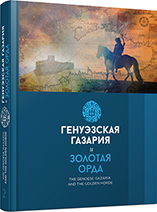Археологические признаки государственного межевания. Методическое значение южносибирской медиевистики
Archaeological Signs of State Land Surveying. Methodological Value of the South Siberian Medieval Archaeology
Author(s): Igor L. Kyzlasov
Subject(s): History, Archaeology, Geography, Regional studies, Historical Geography, Middle Ages, 6th to 12th Centuries, 13th to 14th Centuries
Published by: Издательский дом Stratum, Университет «Высшая антропологическая школа»
Keywords: Southern Siberia; Turkic khaganate; Uigur khaganate; Old Khakass state; Mongol Empire; borders; sculptures; fortresses; barrows; tamgas; runiform inscriptions
Summary/Abstract: Archaeological and epigraphic sources allow to reveal external (state) and internal (administrative) borders between countries of the South Siberian region in the 6th—14th centuries. So, funerary sites with some Turkic sculptures, well distinguishable from similar objects of other Turkic people, seem to be an indicator of external borders of the First and Second East Turkic khaganates. Where they are absent, there was no Turkic domination. The northern border of the Uigur khaganate is noted by pise-walled fortresses and a 230 km long wall that connects them. Old Khakassia stone fortresses protecting passes in Western Sayan Mountains also show that borders of this country passed across ridges. But with expansion of the country from the second half of 9th century, the rivers became borders. It is evidenced by placement of military cemeteries of the ancient Khakass found on only the right coast of the Irtysh River. Two Mongol towns which had typical buildings for the Mongols, appear to be centers of two administrative districts. The old Khakassia family and personal heraldry is familiar to a series 9—10th centuries connected with marks in epitaphs and rocks, specified hereditary land use, outlining borders of possessions in Tuva and in Khakassia.
Book: Генуэзская Газария и Золотая Орда
- Page Range: 157-177
- Page Count: 21
- Publication Year: 2019
- Language: Russian
- Content File-PDF

